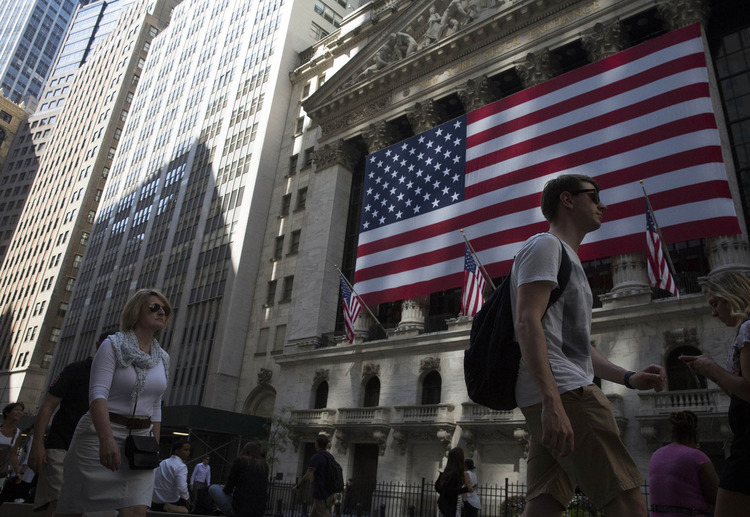Forex
U.S. First-quarter Growth Revised a Touch Lower

- U.S. First-quarter Growth Revised a Touch Lower
U.S. economic growth slowed slightly more than initially thought in the first quarter amid downward revisions to inventory investment and consumer spending, but a robust labor market and income tax cuts are likely to boost activity this year.
Other data on Wednesday showed private employers maintaining a steady pace of hiring this month and the goods trade deficit falling in April. The reports added to solid April data on retail sales, business spending on equipment and industrial production.
Gross domestic product increased at a 2.2 percent annual rate, the Commerce Department said in its second estimate of first-quarter GDP, instead of the previously reported 2.3 percent pace.
The economy grew at a 2.9 percent rate in the fourth quarter. Economists expect a $1.5 trillion income tax cut package, which came into effect in January, will spur faster economic growth this year and lift annual GDP growth close to the Trump administration’s 3 percent target.
The government reported that after-tax corporate profits surged at a 5.9 percent rate last quarter after increasing at a 1.7 percent pace in the fourth quarter.
That was the fastest pace of growth in profits since the first quarter of 2016 and reflected a boost from the reduction in the corporate tax rate to 21 percent from 35 percent. According to the Commerce Department, taxes on corporate income decreased $117.4 billion in the first quarter.
The tax code revamp also bolstered dividends received from the rest of the world. Wages and salaries increased $119.5 billion in the first quarter, an upward revision of $3.1 billion from earlier estimates.
As a result, gross domestic income (GDI) an alternate measure of economic growth increased at a 2.8 percent rate in the January-March quarter. GDI rose at a 1.0 percent pace in the fourth quarter.
The average of GDP and GDI, also referred to as gross domestic output and considered a better measure of economic activity, increased at a 2.5 percent rate in the first quarter. That followed a 2.0 percent rate of growth in the prior period.
Economists had expected first-quarter GDP growth would be unrevised at a 2.3 percent pace. The dollar was trading lower against a basket of currencies and prices for U.S. Treasuries were down. U.S. stock index futures were higher.
WEAK CONSUMER SPENDING
Growth in consumer spending, which accounts for more than two-thirds of U.S. economic activity, braked to a 1.0 percent rate in the first quarter, rather than the previously reported 1.1 percent pace.
That was the slowest pace since the second quarter of 2013 and followed the fourth quarter’s robust 4.0 percent growth rate. But the fundamentals for consumer spending remain strong.
The ADP national employment report on Wednesday showed private sector payrolls increased by 178,000 jobs in May after rising 163,000 in April.
In the first quarter inventories increased at a $20.2 billion rate, instead of the $33.1 billion pace estimated last month. Inventory investment contributed 0.13 percentage point to GDP growth instead of 0.43 percentage point.
The smaller inventory accumulation bodes well for GDP growth in the second quarter. The trade deficit in the first three months of the year was a bit bigger than initially thought. Trade was neutral to GDP growth. It was previously reported to have contributed 0.20 percentage point to output.
Trade could contribute to GDP growth in the second quarter, In another report on Wednesday, the Commerce Department said the goods trade deficit fell 0.6 percent to $68.2 billion in April. Both goods exports and imports fell last month.
Business spending on equipment was revised up to a 5.5 percent growth rate in the January-March quarter from the 4.7 percent pace estimated last month. That was still a moderation in investment following double-digit growth in the second half of 2017.
Investment in homebuilding fell at a 2.0 percent rate in the first quarter instead of being unchanged as reported last month.